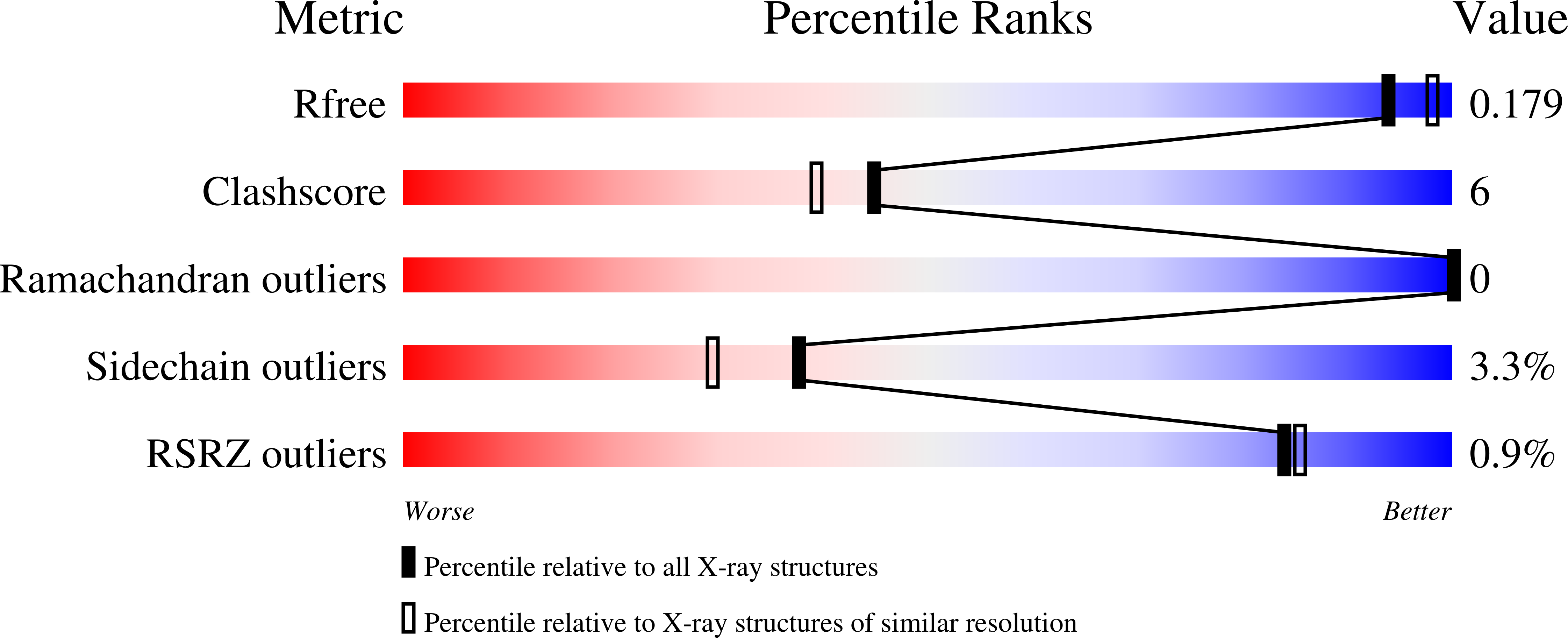Structural constraints on protein self-processing in L-aspartate-alpha-decarboxylase
Schmitzberger, F., Kilkenny, M.L., Lobley, C.M.C., Webb, M.E., Vinkovic, M., Matak-Vinkovic, D., Witty, M., Chirgadze, D.Y., Smith, A.G., Abell, C., Blundell, T.L.(2003) EMBO J 22: 6193-6204
- PubMed: 14633979
- DOI: https://doi.org/10.1093/emboj/cdg575
- Primary Citation of Related Structures:
1PPY, 1PQE, 1PQF, 1PQH, 1PT0, 1PT1, 1PYQ, 1PYU - PubMed Abstract:
Aspartate decarboxylase, which is translated as a pro-protein, undergoes intramolecular self-cleavage at Gly24-Ser25. We have determined the crystal structures of an unprocessed native precursor, in addition to Ala24 insertion, Ala26 insertion and Gly24-->Ser, His11-->Ala, Ser25-->Ala, Ser25-->Cys and Ser25-->Thr mutants. Comparative analyses of the cleavage site reveal specific conformational constraints that govern self-processing and demonstrate that considerable rearrangement must occur. We suggest that Thr57 Ogamma and a water molecule form an 'oxyanion hole' that likely stabilizes the proposed oxyoxazolidine intermediate. Thr57 and this water molecule are probable catalytic residues able to support acid-base catalysis. The conformational freedom in the loop preceding the cleavage site appears to play a determining role in the reaction. The molecular mechanism of self-processing, presented here, emphasizes the importance of stabilization of the oxyoxazolidine intermediate. Comparison of the structural features shows significant similarity to those in other self-processing systems, and suggests that models of the cleavage site of such enzymes based on Ser-->Ala or Ser-->Thr mutants alone may lead to erroneous interpretations of the mechanism.
Organizational Affiliation:
Department of Biochemistry, 80 Tennis Court Road, Cambridge CB2 1GA, UK. [email protected]















